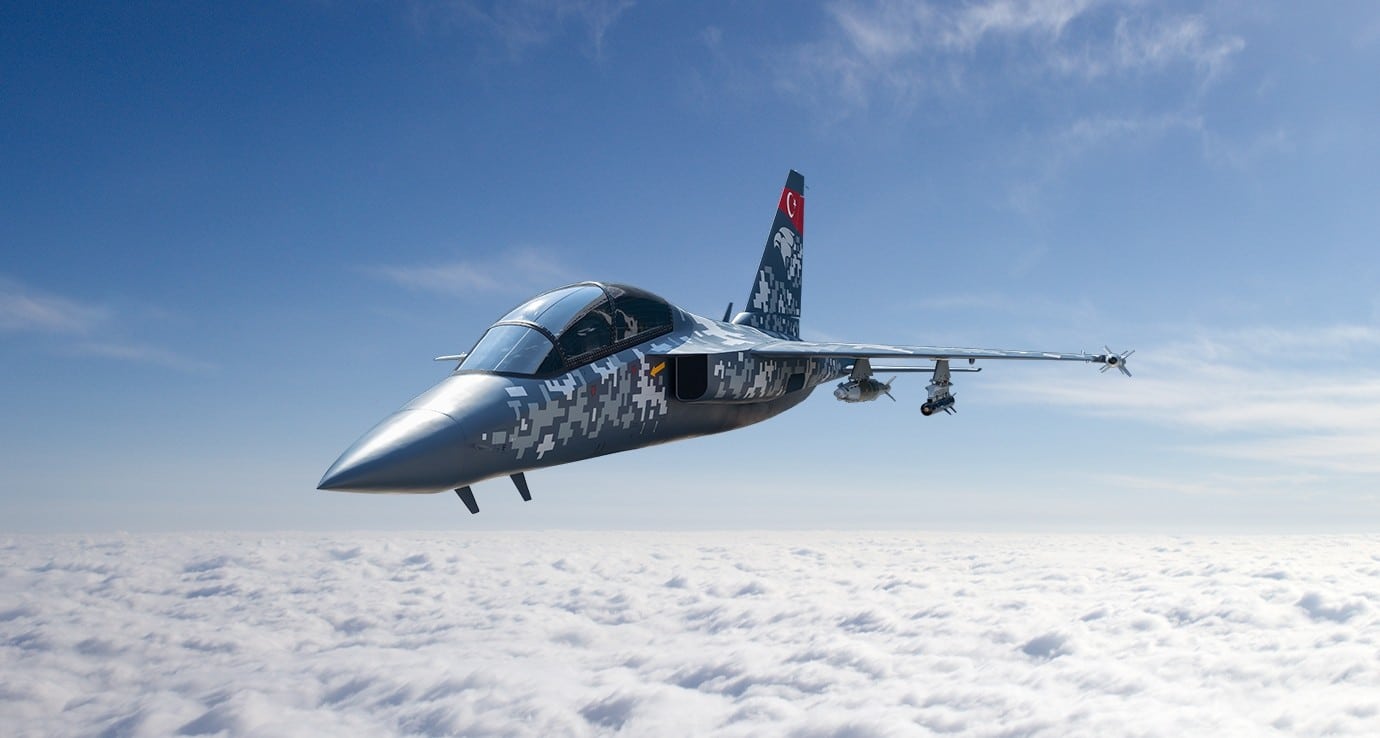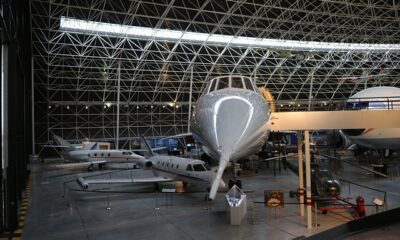Aerospace
Things to know about Turkey built Hürjet for Malaysia.

Hürjet is a single-engine, tandem-seat supersonic advanced trainer and light combat aircraft being developed by Turkish Aerospace Industries. In the fourth quarter of 2022, it is likely to take off.
Let us take a closer look at Hürjet.
The company began the project in August 2017 using its own funds. Turkey is apparently going forward with the Hürjet light attack aircraft’s initial phase of mass manufacturing in 2022. Sierra Nevada firms in the United States are claimed to be supporting the effort.
The aircraft will be capable of air-to-air refueling, fly-by-wire with parameter limiting, a built-in auxiliary power unit, a night vision goggle-compatible cockpit, a head-up display, and an integrated helmet display system.
The company already designed simulator avionics, flight control systems, displays, cockpits, and communication systems.
The Turkish Force intends to use the design to replace the Northrop T-38 Talon in the trainer role and also to supplement the General Dynamics F-16 Fighting Falcon for close air support.
The aircraft is also planned to replace the Northrop F-5 used by the Turkish Stars aerobatic team. A naval version of the aircraft may also be developed. The company also plans to pursue export orders to countries looking to replace older trainer and ground attack aircraft.
Turkey has invited Malaysia to join the Hürjet project, in the role of producing some parts for the aircraft.
Specifications
-
- Crew: one
- Length: 13 m (42 ft 8 in)
- Wingspan: 9.8 m (32 ft 2 in)
- Height: 4.2 m (13 ft 9 in)
- Wing area: 24 m2 (260 sq ft)
- Powerplant: 1 × F404-GE-102 afterburning turbofan, 79 kN (17,700 lbf) thrust 1
Performance
- Maximum speed: Mach 1.4
- Range: 2,222 km (1,381 mi, 1,200 nmi)
- Service ceiling: 13,716 m (45,000 ft)
- g limits: +8/-3 g
- Rate of climb: 200 m/s (39,000 ft/min)
Hürjet may equipped with locally designed ammunition such as CIRIT, TEBER, HGK, and LGK. It can also utilize GPS-guided bombs, conventional bombs, non-guided rockets, and machine guns, as per the inertial navigation system.
Armored body sections, a self-protection system, a data link, laser tacking, an electro-optical and infrared pod, an external fuel tank, and advanced avionics are all included in the armed Hürjet.
The Hürjet can execute light-attack and armed reconnaissance missions with a 3,000-kilogram payload that can be employed through seven external hard points.
JM Exclusive tour onboard the EMBRAER E195-E2 Demonstrator.
When it comes to Tejas, it features eight hardpoints that can carry a variety of weaponry such as the S-8 rocket, R-73, I Derby, Python, Kh-59ME, Kh 59M, 59 L, and 59T missiles. AAS-Hammer. Kh-35 and 59Mk are two variants of the Kh-35.
Turkey is Interested to build 2nd Antonov An225 Mriya commercial jet
It can also transport precision-guided weapons such as the Spice, JDAM, DRDO SAAW, Laser guided bomb, cluster munition, and unguided bomb. There are many more.
The Hurjet is estimated to cost roughly $50 million per fighter.
Boom Supersonic to Roll Out Historic XB-1 Demonstrator Oct. 7

Aerospace
When Ratan Tata was denied entry to the airfield at the Aero India show, he waited

During our visit to Aero India 2019, we had the unexpected opportunity to see Ratan Tata at the event, which was a thrilling moment for us. However, there was a surprising hiccup when the security staff didn’t allow him to enter due to a lack of a security pass.
Despite this, he remained calm and patiently waited for about 20 minutes until a member of the Tata team brought him the required pass, after which he calmly proceeded inside. It was a humbling sight, showcasing his composed demeanor even in such situations.
Ratan Tata ji is not only a renowned industrialist but also a trained pilot, holding a pilot’s license. In 2007, he became the first Indian civilian to fly the F-16 Falcon during the Aero India show in Bangalore—a proud moment for the nation.
His passion for aviation extended beyond flying, as he played a key role in shaping India’s aerospace industry. Under his leadership, Tata ventured into manufacturing and maintaining aerospace components while upholding its legacy of quality. Notably, Tata’s collaboration with Airbus to develop and manufacture the C295 aircraft is a testament to its growing influence in the sector.
-

 Aviation2 months ago
Aviation2 months agoBoeing confirms 797: A New Era for Mid-Size Aircraft
-

 Aviation2 months ago
Aviation2 months agoMicrosoft Flight Simulator Raises $3 Million to Bring Back the An-225 Mriya
-

 Aviation2 months ago
Aviation2 months agoLockheed and Tata Team Up to Build C-130J MRO Facility in India
-

 Tech2 months ago
Tech2 months agoChina Developing Jet to Travel Anywhere in Two Hours
-

 Airlines2 months ago
Airlines2 months agoQantas Engineers Stage Walkout Over Cost of Living Concerns
-

 Airlines2 months ago
Airlines2 months agoQatar Citizens Can Travel to the United States Without a Visa
-

 Aviation2 months ago
Aviation2 months agoBoeing Offers 25% Pay Increase & Promise to Build Next Plane in Seattle
-

 Aviation2 months ago
Aviation2 months agoQatar Airways bans these new Electronic Devices on plane








